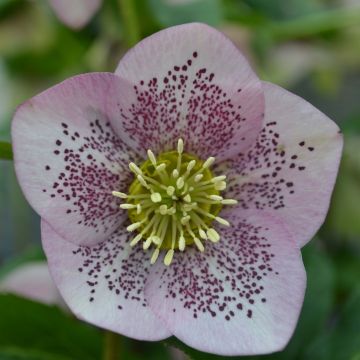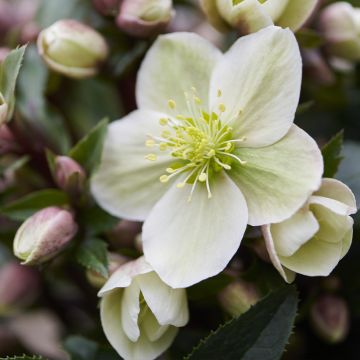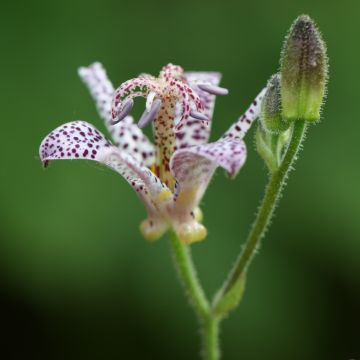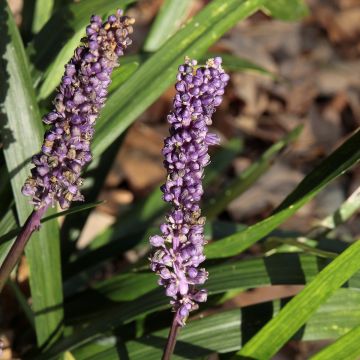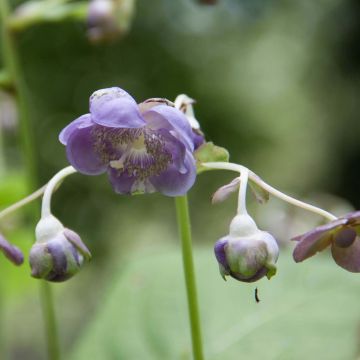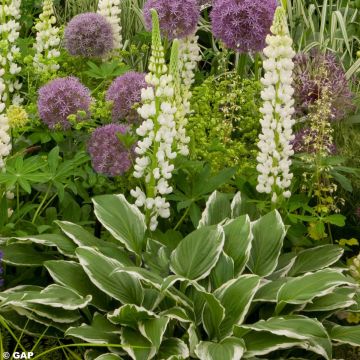

Hellébore ViV® Stefania - Helleborus orientalis
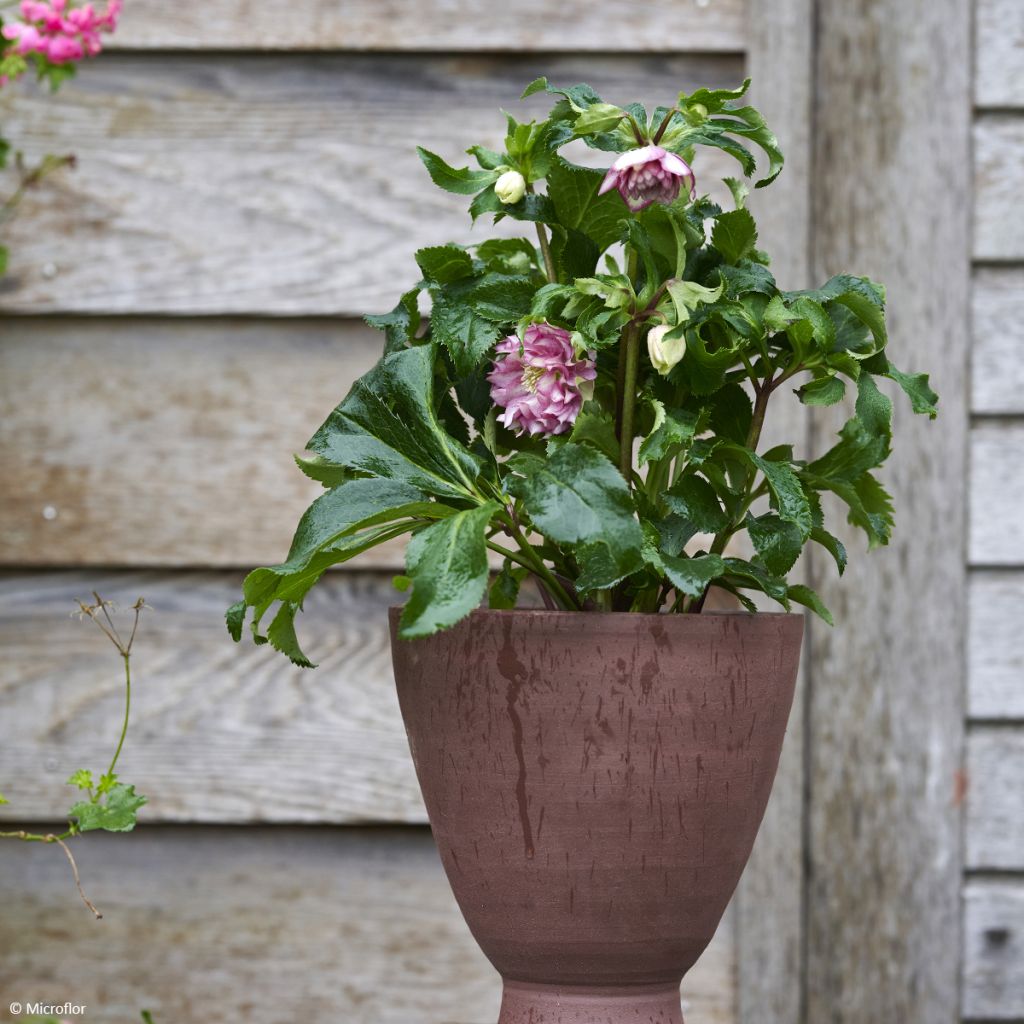

Hellébore ViV® Stefania - Helleborus orientalis
Helleborus hybridus ViV Stefania
Helleborus x hybridus ViV® Stefania
Lenten Rose, Oriental Hellebore
This item cannot be shipped to the selected country
Delivery charge from €5.90
More information
Schedule delivery date,
and select date in basket
This plant carries a 12 months recovery warranty
More information
We guarantee the quality of our plants for a full growing cycle, and will replace at our expense any plant that fails to recover under normal climatic and planting conditions.
From €5.90 for pickup delivery and €6.90 for home delivery
Express home delivery from €8.90.
Does this plant fit my garden?
Set up your Plantfit profile →
Description
The Oriental Hellebore ViV Stefania is a remarkable variety due to the beauty of its flowers. Appearing in November and throughout December, its flowering expresses a certain romantic charm. These flowers, blending white and a fairly bright pink with multiple darker spots, have delicately undulated petals that visually multiply their number. These double flowers are remarkably enhanced by the dark, evergreen foliage, which is decorative all year round. This Hellebore is a robust and hardy perennial, easy to grow in all our regions, including slightly heavy soils, although it prefers humus-rich soils. It will make beautiful displays in shaded areas, as it dislikes direct sunlight.
The ViV Hellebores are varieties derived from in-vitro multiplication. Unlike varieties derived from seed multiplication, hellebores produced by in-vitro guarantee a flowering that is identical to the variety they come from. They therefore have the same genetic characteristics as the mother plant, are more vigorous and develop uniformly.
The Hellebore (or Lenten Rose) Stefania belongs to the family of Ranunculaceae, which includes about sixty genera and approximately 2500 species, mostly herbaceous. The type species Helleborus orientalis is native to Greece, Turkey, and the central and eastern Caucasus. It is a perennial plant that hybridises very easily with other species to produce, through random seedlings, hybrids with diverse colours and forms, so much so that these hybrids are rarely given variety names. They are distinguished by their shape and colour characteristics. Oriental Hellebores are hardy plants that can withstand temperatures as low as -15°C, naturally growing in forests, thickets, and clearings up to 2,000 m (7ft) altitude.
Compact and sturdy, Stefania forms a tuft that is 35 to 45 cm (14 to 18in) tall and about 30cm wide. Its foliage consists of palmate basal leaves, slightly toothed, dark green, and shiny. They are evergreen leaves in winter, which actually only live for 8 months and are regularly replaced by new leaves. They provide a perfect dark background that enhances the lighter flowers that appear from November and for long weeks until winter sets in. Their petals have undulated edges, giving them a charmingly crinkled appearance that reinforces the romantic aspect of their colour. This colour combines a lovely pink speckled with darker pink and mixed with white, with a slightly greenish centre and a bouquet of cream-white stamens of the finest taste. As with other varieties, they are pendulous, allowing water to slide off like an umbrella, thus protecting the heart of the flower from rotting. Hellebores do not like to be moved once established, and young shoots sometimes take time to flower. Therefore, be careful to choose their location well when planting.
Hellebore Stefania is particularly precious with its magnificent flowering during the winter season. It will perfectly associate with other perennials with staggered flowering in shaded areas, to enjoy flowers almost all year round. To stay in a romantic tone, you can plant White Cyclamen coum alongside it, which is more resistant than its delicate flowers would suggest, defying winter from January to April depending on the climate. Caucasian Forget-Me-Nots, or Brunnera, will then take over with their vaporous blue or white flowers above often very decorative foliage. Pink Lily of the Valley (Convallaria majalis Rosea) can accompany them with its charming little bells. And for the summer, choose Tiarella cordifolia Mint Chocolate, with its beautifully cut mint green foliage with chocolate veins and its feathery white spikes that will occupy the space until the majestic white spires of the Bugbanes, highly aesthetic members of the Ranunculaceae family, appear.
Report an error about the product description
Helleborus hybridus ViV Stefania in pictures


Flowering
Foliage
Plant habit
Safety measures
Botanical data
Helleborus
x hybridus
ViV® Stefania
Ranunculaceae
Lenten Rose, Oriental Hellebore
Cultivar or hybrid
ingestion
Cette plante est toxique si elle est ingérée volontairement ou involontairement.
Ne la plantez pas là où de jeunes enfants peuvent évoluer, et lavez-vous les mains après l'avoir manipulée.
Pensez à conserver l'étiquette de la plante, à la photographier ou à noter son nom, afin de faciliter le travail des professionnels de santé.
Davantage d'informations sur https://plantes-risque.info
Other Oriental Hellebore
Planting and care
The Oriental Hellebore Stefania
grows in any neutral to moderately calcareous soil, rich, light or clay, in partial or light shade, while being sheltered from cold and strong winds. This perennial should be planted from early autumn to spring. It thrives in deep, well-prepared soil mixed with a quantity of organic matter. To fertilise, use bone meal or another organic fertilizer. Water the plants well after planting and then add a layer of mulch 2 to 5 cm (1 to 2in) thick. Regularly remove faded leaves to improve flowering. Ensure a planting distance of 30 to 40 cm (12 to 16in) between each plant to encourage their development. Hellebores do not tolerate waterlogged ground, as it may cause it to rot.
The roots should not completely dry out in summer. Hellebores can be affected by a fungal disease transmitted by aphids, known as black spot disease. Remove the spotted leaves from evergreen species when the flower buds appear. Remove faded flowers after the seeds have fallen. They can also suffer from grey rot or die from collar rot. This often occurs due to poor growing conditions, in excessively wet situations.
On a balcony or patio, plant this perennial in a pot 4 to 5 times larger than it, as it needs space to develop its root system. Very hardy, this Hellebore can withstand freezing temperatures down to -15°C.
Planting period
Intended location
Care
This item has not been reviewed yet - be the first to leave a review about it.
Shade-loving perennials
Haven't found what you were looking for?
Hardiness is the lowest winter temperature a plant can endure without suffering serious damage or even dying. However, hardiness is affected by location (a sheltered area, such as a patio), protection (winter cover) and soil type (hardiness is improved by well-drained soil).

Photo Sharing Terms & Conditions
In order to encourage gardeners to interact and share their experiences, Promesse de fleurs offers various media enabling content to be uploaded onto its Site - in particular via the ‘Photo sharing’ module.
The User agrees to refrain from:
- Posting any content that is illegal, prejudicial, insulting, racist, inciteful to hatred, revisionist, contrary to public decency, that infringes on privacy or on the privacy rights of third parties, in particular the publicity rights of persons and goods, intellectual property rights, or the right to privacy.
- Submitting content on behalf of a third party;
- Impersonate the identity of a third party and/or publish any personal information about a third party;
In general, the User undertakes to refrain from any unethical behaviour.
All Content (in particular text, comments, files, images, photos, videos, creative works, etc.), which may be subject to property or intellectual property rights, image or other private rights, shall remain the property of the User, subject to the limited rights granted by the terms of the licence granted by Promesse de fleurs as stated below. Users are at liberty to publish or not to publish such Content on the Site, notably via the ‘Photo Sharing’ facility, and accept that this Content shall be made public and freely accessible, notably on the Internet.
Users further acknowledge, undertake to have ,and guarantee that they hold all necessary rights and permissions to publish such material on the Site, in particular with regard to the legislation in force pertaining to any privacy, property, intellectual property, image, or contractual rights, or rights of any other nature. By publishing such Content on the Site, Users acknowledge accepting full liability as publishers of the Content within the meaning of the law, and grant Promesse de fleurs, free of charge, an inclusive, worldwide licence for the said Content for the entire duration of its publication, including all reproduction, representation, up/downloading, displaying, performing, transmission, and storage rights.
Users also grant permission for their name to be linked to the Content and accept that this link may not always be made available.
By engaging in posting material, Users consent to their Content becoming automatically accessible on the Internet, in particular on other sites and/or blogs and/or web pages of the Promesse de fleurs site, including in particular social pages and the Promesse de fleurs catalogue.
Users may secure the removal of entrusted content free of charge by issuing a simple request via our contact form.
The flowering period indicated on our website applies to countries and regions located in USDA zone 8 (France, the United Kingdom, Ireland, the Netherlands, etc.)
It will vary according to where you live:
- In zones 9 to 10 (Italy, Spain, Greece, etc.), flowering will occur about 2 to 4 weeks earlier.
- In zones 6 to 7 (Germany, Poland, Slovenia, and lower mountainous regions), flowering will be delayed by 2 to 3 weeks.
- In zone 5 (Central Europe, Scandinavia), blooming will be delayed by 3 to 5 weeks.
In temperate climates, pruning of spring-flowering shrubs (forsythia, spireas, etc.) should be done just after flowering.
Pruning of summer-flowering shrubs (Indian Lilac, Perovskia, etc.) can be done in winter or spring.
In cold regions as well as with frost-sensitive plants, avoid pruning too early when severe frosts may still occur.
The planting period indicated on our website applies to countries and regions located in USDA zone 8 (France, United Kingdom, Ireland, Netherlands).
It will vary according to where you live:
- In Mediterranean zones (Marseille, Madrid, Milan, etc.), autumn and winter are the best planting periods.
- In continental zones (Strasbourg, Munich, Vienna, etc.), delay planting by 2 to 3 weeks in spring and bring it forward by 2 to 4 weeks in autumn.
- In mountainous regions (the Alps, Pyrenees, Carpathians, etc.), it is best to plant in late spring (May-June) or late summer (August-September).
The harvesting period indicated on our website applies to countries and regions in USDA zone 8 (France, England, Ireland, the Netherlands).
In colder areas (Scandinavia, Poland, Austria...) fruit and vegetable harvests are likely to be delayed by 3-4 weeks.
In warmer areas (Italy, Spain, Greece, etc.), harvesting will probably take place earlier, depending on weather conditions.
The sowing periods indicated on our website apply to countries and regions within USDA Zone 8 (France, UK, Ireland, Netherlands).
In colder areas (Scandinavia, Poland, Austria...), delay any outdoor sowing by 3-4 weeks, or sow under glass.
In warmer climes (Italy, Spain, Greece, etc.), bring outdoor sowing forward by a few weeks.



































